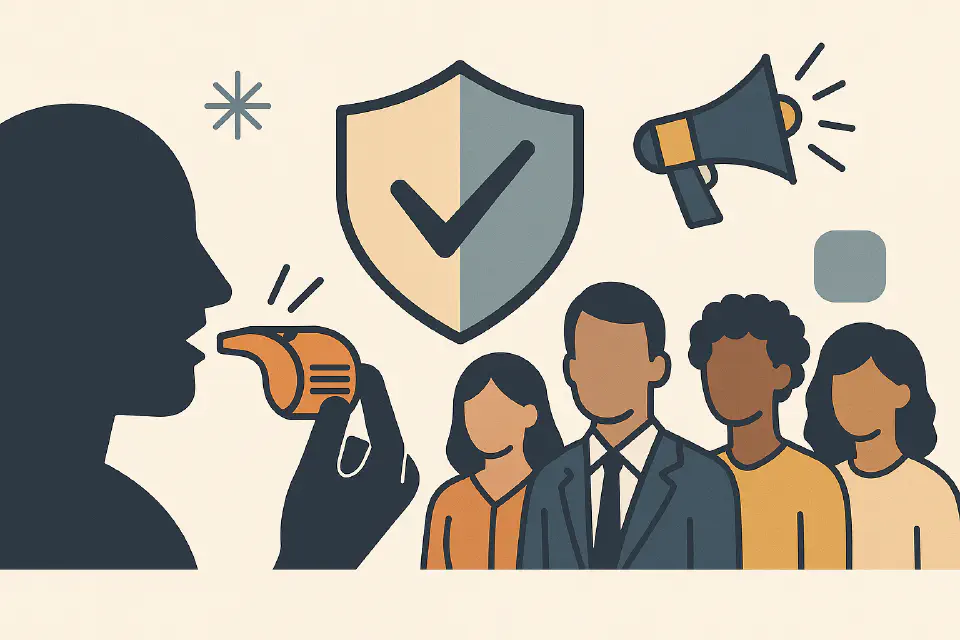
Whistleblowing: Encouraging Speak-Up Cultures
If people can’t speak up, problems don’t get solved—they get buried. HR must ensure whistleblowing is safe, credible, and supported.
What Is Whistleblowing?
Effective whistleblowing systems protect the reporter, address misconduct early, and foster cultures of integrity and accountability.
Why It Matters for HR
- HR is often responsible for designing, monitoring, or responding to whistleblower channels.
- An unsafe reporting environment leads to silence, fear, and cover-ups.
- A trusted system can surface early warning signs, improve legal compliance, and build organizational integrity.
The Psychological Barrier: Why People Stay Silent
Even when wrongdoing is visible, employees often hesitate due to:
- Fear of retaliation (e.g., demotion, isolation, dismissal)
- Distrust in the process (e.g., nothing happens, leaks)
- Peer pressure or loyalty
- Cultural norms around hierarchy or conflict avoidance
Legal Contexts
🌍 Global Overview
| Region | Key Law / Regulation | Scope and Notes |
|---|---|---|
| EU | EU Whistleblower Directive | Applies to firms >50 employees; protection from retaliation |
| USA | Sarbanes-Oxley, Dodd-Frank, state laws | Financial sector + others; includes financial incentives |
| UK | Public Interest Disclosure Act (PIDA) | Covers workers who disclose wrongdoing in good faith |
| Australia | Public Interest Disclosure Act (2013) | Applies to government and some private sectors |
Building a Speak-Up Culture
Whistleblowing isn’t just legal—it’s cultural. Here’s how HR helps create trust:
1. Promote Reporting as a Duty, Not a Risk
Frame it as contributing to safety, transparency, and accountability.
2. Ensure Multiple Reporting Channels
- Anonymous hotline
- HR representative
- Digital submission
- External ombuds or ethics lines
3. Train Managers to Respond Appropriately
- Take reports seriously
- Avoid judgment or defensiveness
- Escalate to HR or legal appropriately
Protecting Whistleblowers
Key Protections
- Non-retaliation guarantees (written and enforced)
- Confidentiality or anonymity where possible
- Clear follow-up and resolution processes
- Visible disciplinary actions when retaliation occurs
HR’s Role in Case Handling
- Receive and triage reports
- Collaborate with legal/investigations team
- Ensure fair process and documentation
- Communicate outcomes when appropriate
Balance empathy, neutrality, and due process.
Measuring and Improving the System
Track:
- Number of reports (volume ≠ problem; silence is worse)
- Resolution time
- Outcomes and themes
- Employee perception (via surveys)
Use data to refine channels, training, and policy.
Global and Cultural Considerations
- In some cultures, speaking up is seen as betrayal—not courage
- Consider local norms in messaging and design
- Tailor language (e.g., “integrity lines” vs. “whistleblower hotline”)
Final Thought
Whistleblowing systems are a mirror of your company’s actual ethics—not just stated values.
Build them with trust, protect those who speak up, and prove that doing the right thing leads somewhere.